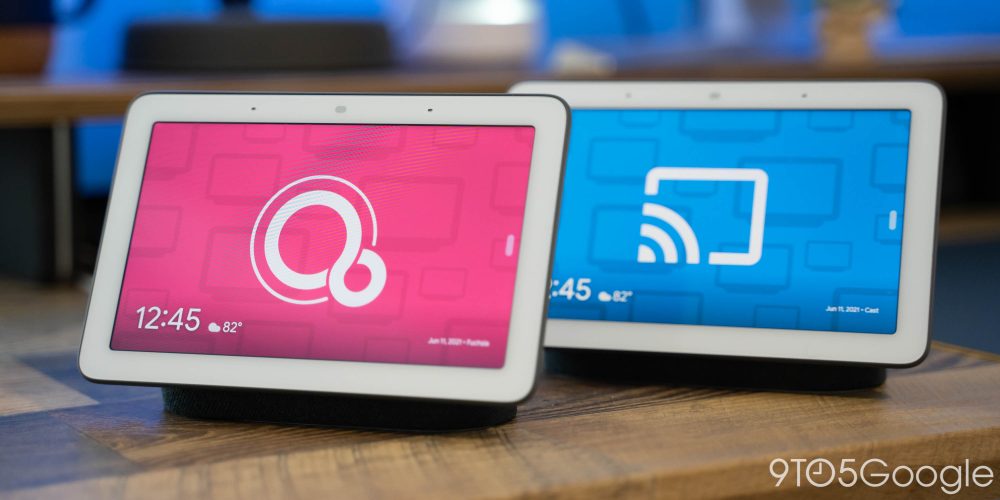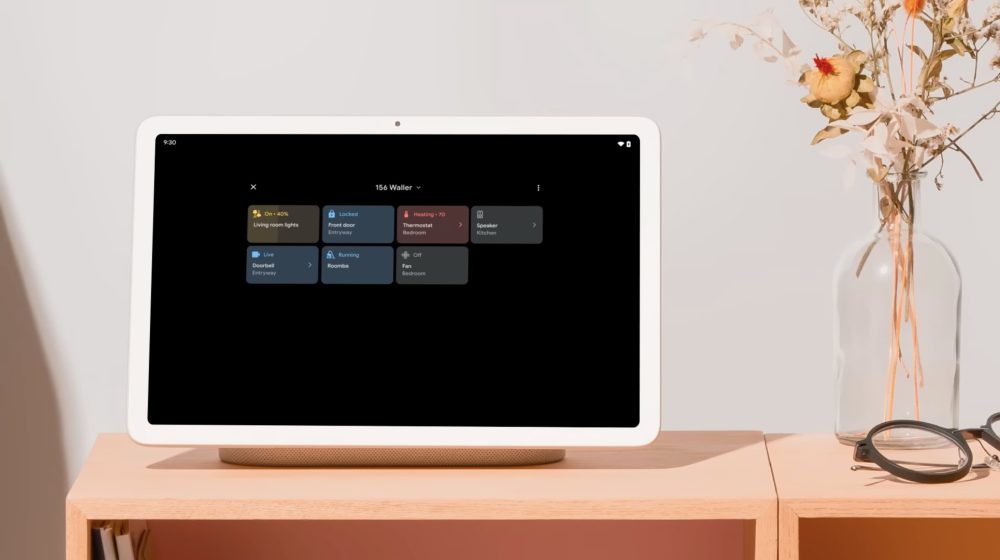
With the upcoming release of the Pixel Tablet, Google is once again reshaping the Google Assistant smart display ecosystem, which started on Android and has now come full circle back to Android.
History of Google Assistant smart displays
The field of smart displays began in earnest in 2017 with the Amazon Echo Show, which took the Alexa smart speaker platform and added a touchscreen display. Google followed suit a year later, working with partners like JBL and Lenovo to release smart displays featuring the Google Assistant.
These third-party options were built on “Android Things,” a variant of Android originally intended for low-power Internet of Things devices. Google refocused Android Things development in 2019 toward optimizing for smart speakers and displays, but ultimately the project was discontinued less than two years later.
In the interim, Google released its own take on the smart display form factor, the 2018 Nest Hub (originally named the “Google Home Hub”). By comparison to the Android-powered smart displays, the Nest Hub fell behind on specs with its low-resolution display, lack of a camera, and less-than-impressive audio, but Google made up for it with the gadget’s low cost.
At $149 (later $129, then $89), the Nest Hub was a more budget-friendly option, offering otherwise the same set of features as smart displays from Lenovo and JBL. Under the hood, rather than running on Android Things, the Nest Hub adopted the same “Cast OS” software used by Google’s smart speakers and the original generations of Chromecast.
In 2021, Google shook things up a bit by letting Nest Hub smart displays serve as the debut of its Fuchsia perfect. Despite representing many years of work to create an operating system from scratch, the Fuchsia updates for Nest Hub and Nest Hub Max brought little-to-no new functionality, having been designed to be an unnoticed change.

When rumors first ramped up about what we know today to be the Pixel Tablet, the impression given was that it would be a new generation of Nest Hub, simply with a detachable screen. This led some to speculate that we might see the Fuchsia-powered smart display experience get an upgrade to be more useful as a general-purpose tablet.
Instead, Google’s next big foray into the smart display market is actually a Pixel-branded tablet, and with the “Pixel” name comes the full Android system. So what started on Android (Things) has gone through multiple major refactors only to end up back on Android.
Is the Pixel Tablet really a Nest Hub?
Despite having changed platforms multiple times, the core Google Assistant smart display experience has remained the same, albeit steadily upgraded over the years. This is possible because Google built that smart display experience using the Flutter app kit, allowing the same code to run on multiple platforms.
Given that Flutter can just as effectively make apps for Android, it should be simple enough for Google to bring the exact same Nest Hub experience to the Pixel Tablet as an app, of sorts. Meanwhile, Google has had a redesign of the Nest Hub software seemingly ready to launch for nearly a year.
That said, we haven’t seen much of the Pixel Tablet’s smart display capabilities in action. Early previews have focused on using it as a normal Android tablet, and the few images we’ve seen don’t look like the same Nest Hub experience to which we’ve grown accustomed. The sole preview of smart-home-related UI only shows a larger version of what’s offered on Pixel phones today.



One possibility is that the Pixel Tablet may ditch the Nest Hub experience altogether. Nest Hub’s software needed to be able to do everything in a self-contained way, which seems in direct contrast to how the Pixel Tablet could work.
For example, if you ask the Google Assistant in a Nest Hub to set a timer, it does so on its own and shows a specific screen dedicated to your active timers. Meanwhile, on the Pixel Tablet, asking for a timer will likely invoke the separate Google Clock app.
Similarly, as shown in Google’s teaser images, the Pixel Tablet can manage smart home devices through the Google Home app and Android’s “Home controls” feature, rather than needing a dedicated smart display page.
Rather than including an all-encompassing smart display experience, all that’s needed is for the Google Assistant to be smart enough to manage these tasks in diverse Android apps. As it happens, that’s exactly what Google has been preparing for since the “next-generation Assistant” first launched on the Pixel 4.
An Assistant to tie it all together
At Google I/O 2019, the company showcased the next-generation Assistant for the first time, revealing how it could perform actions within (and across) any number of apps.
The demo was meant to encourage developers to create App Actions, one of the underlying mechanisms behind the next-generation Assistant. App Actions offer direct connections between the Google Assistant and your current Android apps. That means your Pixel Tablet can be – or perhaps is limited to being – just as smart and capable as the library apps you’ve installed.
By comparison, Google Assistant speakers and smart displays were once able to access a sizeable library of additional applets and capabilities through “Conversational Actions.” For example, if you wanted to find a new recipe and get help cooking it, you could say “Hey Google, talk to Tasty.”
However, Google announced Conversational Actions’ impending shutdown last year, explicitly encouraging developers to focus on App Actions instead.
With all that in mind, I believe that Google may be taking a clean-slate approach with the Pixel Tablet, leaving behind the Nest Hub’s legacy and relying on the Google Assistant and the vast Android app ecosystem to bring the smarts.
Instead of needing to memorize a phrase like “talk to Tasty,” you could directly ask the Google Assistant to search for a particular recipe in your app of choice. The Assistant is already smart enough to know which service you prefer for music, which services have which movies and shows, and more. These can now run through the full Android apps instead of a stripped-down Cast experience.
More importantly, all of this could be done without changing your “Hey Google” habits.
So while it may feel like Google’s smart display journey has wound up right back where it started, from Android to Android, we’re actually in uncharted territory. Rather than simply copying what the Nest Hub did, the Pixel Tablet could very well launch as the best usage of the next-generation Google Assistant. After all, what better place for a hands-free voice assistant than on a device you may not always have in your hands?
Author: Kyle Bradshaw
Source: 9TO5Google



